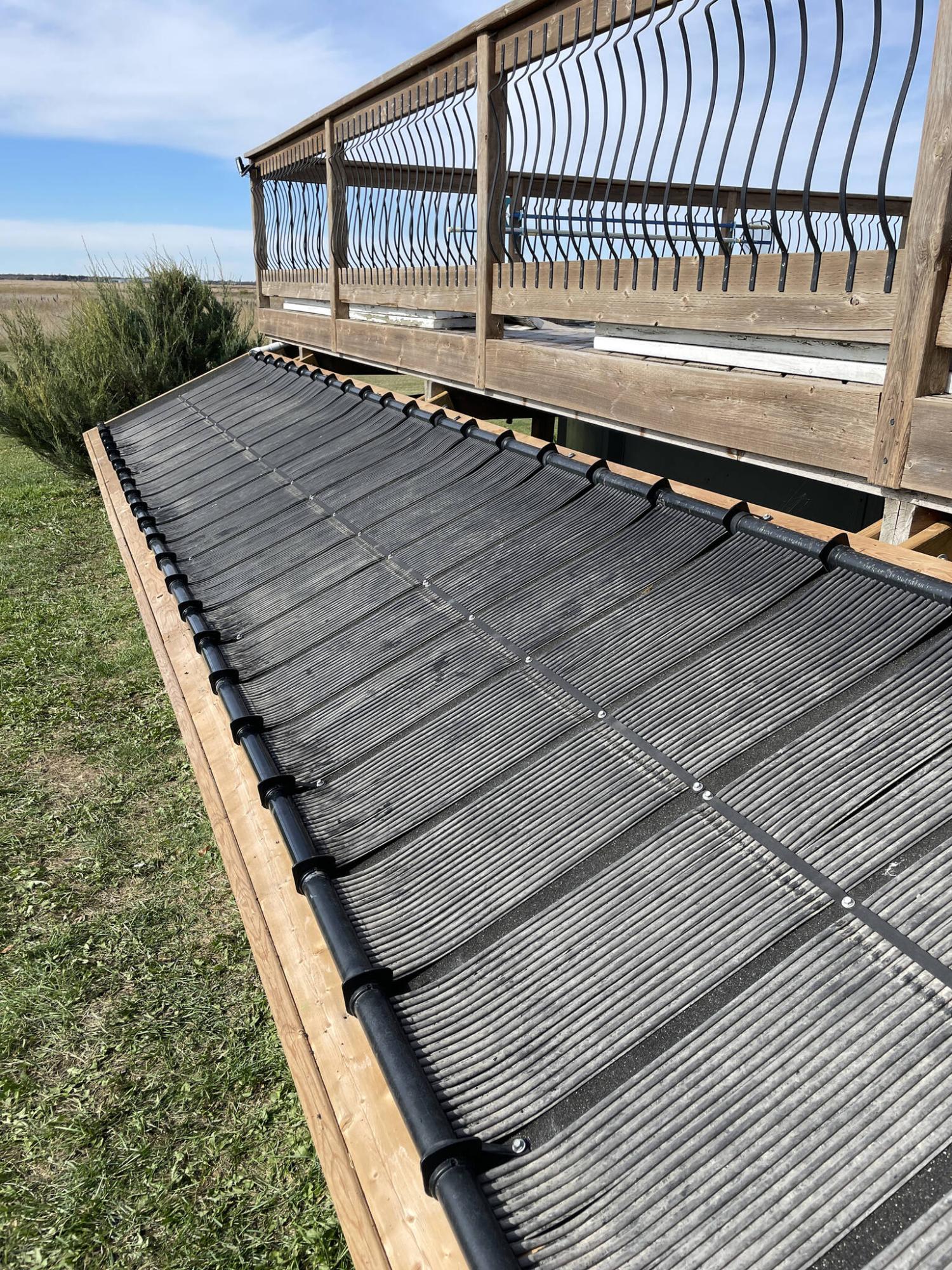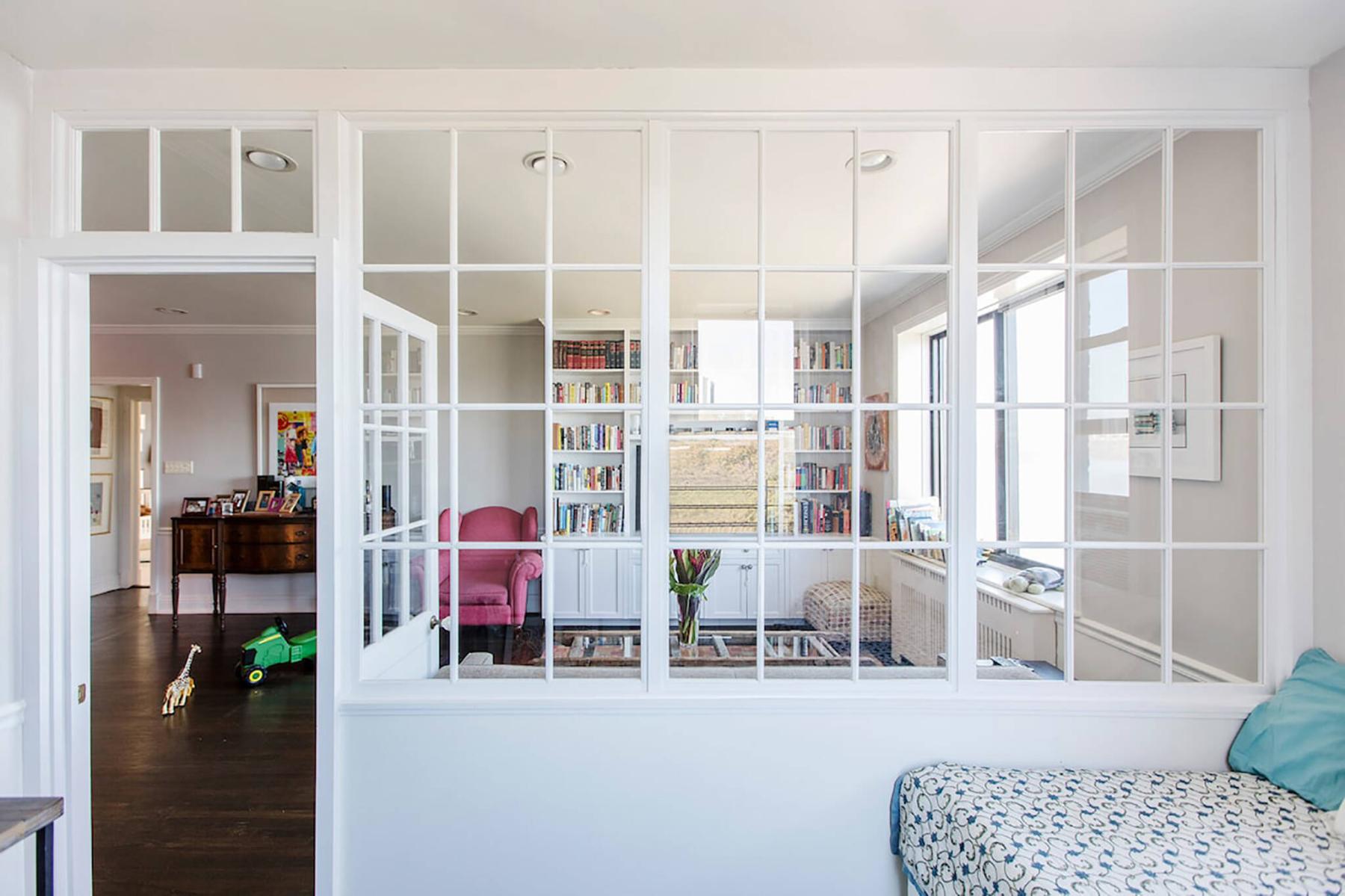Renovation & Design
Renovation & Design
Microfiber cloth great for cleaning your phone
Question: What can I use to clean my cell phone without damaging it? Andrea
Answer: Purchase a soft microfiber cloth. Wipe the phone with a solution of 50/50 rubbing alcohol and water. Use the damp cloth to polish each side, including the screen.
Question: In preparing for the holidays, I am planning on having a few Christmas parties at my house. We will be serving vegetarian food choices: cheese, crackers and cabbage soup. What can I do to make my house smell good? Thank you for your column. Benito
Answer: Consider serving a fragrant drink. Before company arrives, fill a slow cooker with a British drink known as wassail. Let the aroma of Christmas fill the air all evening while guests help themselves to a delicious cup of this hot drink. Combine one quart (1 L) apple cider, four cinnamon sticks, one whole nutmeg, half cup (125 mL) honey, quarter cup (60 mL) lemon juice. Simmer the wassail on the stove or in a slow cooker and encourage guests to help themselves.
Question: What can I do to prevent pilling on my winter sweaters? Ellice
Answer: Those little fuzz balls can be prevented with a few simple steps. Before washing sweaters, turn them inside out. Add a half cup of vinegar to the wash load. Avoid putting sweaters in the dryer, this is an effective way to prevent pilling. Try not to overload your clothes in the washing machine, fabrics that rub together can add to the damage. When the damage is done, purchase a fabric shaver to remove the balls.
Question: How can I make boxed pancakes that taste more like restaurant pancakes? What is the difference? Yolanda
Answer: The first difference between home kitchen versus commercial kitchen pancakes is the griddle. Restaurants typically use a cooking surface that cooks pancakes evenly, and crispy around the edges. Use buttermilk instead of water or regular milk. If you don’t have buttermilk, add a little vinegar to your regular milk. Flip the pancakes when you see bubbles appear. For better texture, add an egg to the batter. Grease the pan with butter instead of oil. Add flavor such as vanilla or cinnamon to the batter.
Friendly feedback
Re: Shovelling snow
My best tip for shovelling is to spray the shovel with WD-40 before I start shovelling. This extra step prevents my shovel from rusting and stops the snow from sticking to the surface. This is information that every Manitoban should have — pass it on. — Norman
Gift wrapping hacks
Instead of traditional wrapping paper, consider purchasing a roll of brown contractor’s paper from a home improvement store, or a second-hand store. The paper is inexpensive and lasts a long time. Add embellishments such as bows, bells, pine branches or pinecones to each package.
Make an ordinary gift appear unique and extra special by purchasing a festive box from a dollar store. Wrap each object using tissue paper. Tie a bow around the box. Make sure to remove all price tags.
Instead of a bow, tie chocolate or a candy cane or a cookie cutter to the outside of each gift.
Attach a bread tag to the cut edge of tape on the roll, this will make it much easier to find your place.
Never cut another crooked line, use laser scissors, and direct your cut in the right direction.
Make gift cards using last year’s Christmas cards.
Gift bags are not recyclable, consider a more environmentally friendly way to package your presents.
Note: Every user assumes all risks of injury or damage resulting from the implementation of any suggestions in this column. Test all products on an inconspicuous area first.
Have a great suggestion or tip?
reenanerbas@outlook.com
Renovation & Design
Insulation, heat will help prevent crawlspace condensation
Questions: I really appreciated an article you wrote on heating a crawlspace. I live in Ottawa and am currently debating how to make a cottage warmer and more comfortable. We have a cottage that is on piers/posts that we mainly use in three seasons, but enjoy visiting for a handful of weekends in the winter. We’ve noticed quite a bit of condensation in the cold days under our couches, etc., where air circulation does not happen. I was planning on having the floor sprayed underneath with foam insulation. After reading your article I am doubting if I should continue with this expensive plan. I can see the benefit of sealing off the crawlspace. Since I only plan to use the cottage a few times in the winter, I typically shut off the power. Do you see any issue with heating the crawlspace and letting all of this go through freeze/thaw cycles?
Regards, Bob Botti.
Answer: Insulating an open floor of a seasonal home, even with high density spray foam, will do little to prevent condensation or minimize issues with an infrequently used building. Enclosing, insulating, and heating the crawlspace is a better way to go to make it more comfortable when you are able to use it in the winter months.
Your submission comes at a time where I annually address this frequently confounding issue, for people with seasonal homes. Many cottage owners and contractors have battled this question about whether to insulate an open floor of a cottage, or install an insulated skirt to enclose a crawlspace below. I fit in both of these categories, being both a summer home owner and ex-contractor, and will tell you that there should only be one choice that will provide any sort of satisfaction. Having attempted the open, insulated floor method on more than one occasion, all have later had the insulation and air/vapour barrier removed and replaced with an insulated crawlspace. Admittedly, none of these floors were done with spray foam, as it was not readily available a few decades ago. But, in hindsight that may not have made much of a difference. For any residential property in our climate, home or cottage, a heated crawlspace will lead to a much more comfortable living space above the floor.
The reason for this is due to the simple scientific principal that tells us that warm air rises. In a building, this phenomenon has been termed the “stack effect” by building scientists and engineers. Understanding how much this affects air movement inside and outside the entire building enclosure has changed the way buildings are designed and built in the last few decades. Because of the stack effect, almost no heat loss from air leakage will occur from the living space through the floor, insulated or not. Insulation may help prevent radiant or conductive heat loss through this area, which should only be a minor amount. High density foam should prevent cold air infiltration from below the floor, which may help keep it from being really cold in the dead of winter, but will not make it much comfortable to walk on. Only adding heat to an open airspace underneath will provide a noticeable warming effect on the floor joists, sheathing, and flooring above.
Skirting in and insulating the walls of the crawlspace with high density polyurethane spray foam, or extruded polystyrene sheathing, will ensure the space may be heated either continually or periodically over the cold months. The dirt floor should be covered with a layer of 6MIL polyethylene sheathing, or equivalent, to prevent drawing excessive moisture into the enclosed space from the moist soil. A few screened summer vents, at all sides of the enclosed space, will help remove excess moisture, which can be replaced with insulated hatches in the fall.
Another benefit of heating the crawlspace will be to allow year-round use of plumbing supply and fixtures. Even by heating the entire cottage to normal levels, there may be no way of ensuring water supply pipes don’t freeze in or below an insulated floor system. As long as the heat source is reliable, typically electric heaters or ducts from a forced air furnace, a warmed crawlspace should prevent frozen plumbing supply pipes. These will still have to be drained if you do plan to shut the heat entirely, but leaving the thermostats set low should prevent frozen pipes. That will also save energy and money, preventing the need to keep it at normal room temperatures when no one is there.
If you do leave the plumbing shut off and drained during the cold weather, there should be little problem with turning of the heat for the crawlspace, for long periods of time. This may allow some frost to build up, from frozen condensation inside the enclosed crawlspace, but that should melt when the heat is restored, sit on the surface of the floor poly, and evaporate in the spring when the summer vents are installed. That method may not do much for the condensation you have observed on the floor, which may still return every time you shut of the power and subsequent heat in the building. For that issue, leaving a couple of ceiling or portable fans on when the place is vacant may help with air movement. Also, if you have a wood burning fireplace, leaving the hearth doors and flue open should provide a natural vent for the living space, as long as you have a proper rain cap and screen to prevent pest and snow infiltration.
Foam insulating a cottage floor may do nothing to prevent condensation in the unheated, enclosed living space above. Providing some air movement and ventilation, through use of fans and fireplace flues, may be a better approach. Either way, enclosing, insulating, and heating a crawlspace below the floor will make it much more comfortable and prevent condensation when you are using the building during the cold months.
Ari Marantz is the owner of Trained Eye Home Inspection Ltd. and a Registered Home Inspector (RHI)(cahpi.ca). Questions can be emailed to the address below. Ari can be reached at 204-291-5358 or check out his website at trainedeye.ca.
trainedeye@iname.com
Renovation & Design
Ozone machine will help eliminate powerful odours
Question: We have an older camper trailer in which the previous owners placed Downy Unstoppable beads throughout the unit. We have washed the interior, had the windows open all summer, had all cushions outside as well and stuffed the cupboards and closets with newspaper over the winter to try and get rid of the strong and annoying scent. None of this has seemed to work. Any recommendations? Debbie
Answer: For very overpowering smells, you might want to consider renting an ozone machine because the smell will disappear quickly. This little machine is not recommended for regular use, but it is great for enclosed areas that have had smoke or flood damage, or other smells. The machine lets out a molecule called O3 (which of course is oxygen with an extra atom attached). The third atom escapes into the air and absorbs all odours. These machines can be rented at tool-rental retailers, as well as some hardware stores. Read all manufacturer’s instructions before use.
Question: Can you give me a homemade recipe for shampoo that doesn’t leave my hair feeling frizzy? Ava
Answer: Into a spray bottle combine ten drops of lavender essential oil, ten drops tea tree oil, one can of coconut milk, one-quarter cup liquid castile soap, and two tablespoons apple cider vinegar. Spray your hair, scrub, and rinse.
Question: What is the easiest way to clean the floor of my bathroom; it hasn’t been cleaned in about six months and it smells bad?
Answer: Here is an easy trick that will leave your bathroom smelling great. Spray shaving cream onto the floor. Use an old rag to spread the cream all over. Wait 30 minutes. Clean with a mop and warm water. Dry and enjoy.
Question: I have an old stove with black, solid elements. They regularly get a brown stain around the edge of each element, from food splashing onto the surface. How can I clean around the oven top burners of my stove? Linda
Answer: Wait until the oven is off and cool enough to the touch so that you don’t burn your self. Pour a little water around the elements, use a sugar cube to scrub around the outside of each element. Rinse with water and wipe to dry.
Shell game
Re: Trick for Peeling an Egg
Gently crack one end of an egg. Submerse it in water, and boil. Fill a sealable container with cold water. Add the egg and cover with a lid. Shake the container, until the shell falls off. Oliver
Terrific tips
Store cheese by making a removable cover. While still in the plastic wrap, use a sharp knife to cut off a two-inch piece of cheese from the end of the block. Slide the plastic off the cheese and eat the little piece of cheese. Cover the bare end; this creates a cover and prevents the edge from getting hard. — Tyrone
The best way to properly fit your garbage bag. When I put a kitchen garbage bag into a trash can, unfold the bag and wrap the opening of the bag around the lip of the can. Push the middle of the bag downward. The garbage bag will stay in place better than if you first put the bag into the can and then wrap it around the lip. — Varina
Never throw out broccoli stalks. Cut off the outside edges, cut them into strips. Fry them in a pan with a little soya sauce and oil. A healthy snack, packed with flavour. — Garmin
Note: Every user assumes all risks of injury or damage resulting from the implementation of any suggestions in this column. Test all products on an inconspicuous area first.
Have a great suggestion or tip? Email reenanerbas@outlook.com
Renovation & Design
Fixing flickering light may require a pro
Questions: We read an article awhile ago about a homeowner who had flickering lights in his house, after he had the knob and tube replaced. The homeowner had electricians come back and they changed everything and the problem was still happening. Do you know if this problem was ever resolved? We are selling our home in the spring and we had our knob and tube wiring replaced in 2017. We have the same problem, as of a year or so ago, that this other homeowner had. It only happens in the morning, for five to ten minutes, then totally stops. Even when we open the fridge the light flickers in there, too.
Manitoba Hydro were down recently, checked things outside, and said that it is not an outside problem. They suggested we get an electrician to check the breaker panels.
Thanks, Larry.
Answer: Diagnosing an unusual, albeit minor, electrical issue may be very time consuming, costly, and not worth the effort. If the problem gets worse, occurs on a regular basis, or other issues are seen with the electrical system, then calling a more experienced electrical contractor to investigate the defect may be in order.
It is very commendable for you to endeavour to figure out and repair the small electrical issue you are having in your home, before you put it up for sale. Fortunately, there should not be a scenario where this is required, as long as you identify the issue on any property disclosure documents you fill out. As long as you disclose this issue to the future purchaser, you will have fulfilled your ethical duty. It is likely a minor issue to most people, but may seem more serious to you because it occurred after major rewiring was done, at considerable expense. You should also contact the contractor who did the K&T removal, who may have an idea what is occurring, if other customers have experienced the same issue. At a minimum, the contractor should revisit your home at their cost, observe the problem and propose a possible solution.
While your electrical problem may be tied to the complete upgrade of the wiring in your home, it may also be due to something else. There are numerous scenarios that could cause the short flickering of the lights in your home, when first turned on. I am purely speculating, but this could be due to a small power surge, a loose or corroded main ground, bad connections between older fixtures and the new wires, or a mechanical problem with some appliance in your home. I am sure that a Red Seal electrician could name a dozen or more issues that may lead to this minor problem. The real trouble may be the difficulty in locating the source of the issue, especially since it began to occur several years after all the upgrade work was complete.
Calling the electrical utility, Manitoba Hydro, was the logical place to begin the investigation of the light issue. I am sure they provided the house call at no cost, and should have checked the main service wiring, service entrance and mast, and the connections at the pole or box. If there were any defects in these locations, the repairs would have been scheduled or completed at that time. Since the problem persists, the next logical location for an issue is the electrical panel. I would suggest that the K&T removal contractor open the panel and do a thorough visual inspection. If there are any unusual or loose connections, corrosion, cut wire sheathing, or damaged breakers, then a quick repair is in order. The main ground wire should also be examined, to ensure it is not disconnected or loose at either end. Often, the clamp that holds this bare wire to the main water supply pipe entering below the meter can loosen, over time. I would hope that the Hydro technician inspected this during their visit, but scrutiny by an extra set of professional eyes does not hurt.
As for your question about the follow-up on my previous article, I rarely get feedback from the respondents, especially since the question may have been sent to me months, or even years, prior to publication. I keep most inquiring e-mails for future use, especially if they are similar to others I have recently answered, or currently have stored on my hard drive. So, I am not sure is their similar issue was successfully resolved, and may have little chance of finding that out.
As for the flickering light issue, it does appear to be a very minor problem, especially since it only occurs first thing in the morning and quickly abates. It may not even have occurred to many homeowners to note it as a defect. You may be more sensitive to the light anomaly since you have gone through the significant renovation of your electrical system, likely at the request of an insurance provider. While the upgrades will make that system much safer and less likely to cause an injury or a fire, there is almost no visible benefit to spending all that money. Unlike new kitchen cabinets, flooring, or appliances, new wiring will be hidden from view. That can make some homeowners more aware of systems that are otherwise taken for granted.
Spending additional funds trying to figure out your short-lived morning light issue, beyond those already shelled out for the K&T removal and upgrades, may not be prudent. If any more significant electrical defects are noticed in the future, or the flickering becomes much more frequent, then another Red Seal electrician should be consulted.
Ari Marantz is the owner of Trained Eye Home Inspection Ltd. and a Registered Home Inspector (RHI)(cahpi.ca). Questions can be emailed to the address below. Ari can be reached at 204-291-5358 or check out his website at trainedeye.ca.
trainedeye@iname.com







